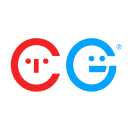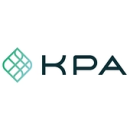For the sales team at CarGurus, data doesn’t just offer valuable insight — it unlocks confidence.
By sharing proven facts with prospects and current customers, Senior Inside Sales Manager Meg Kraus and her teammates have closed large deals and renewals while enhancing their team culture in the process.
“Our teams feel great about what they’re selling, and customers feel comfortable — if not excited — when they sign on or renew,” she said.
Kraus said data helps her and her peers understand where to focus, offering insight into which accounts are hitting their goals and which could use additional support, ultimately leading to a “smarter” sales org.
Data strengthens the sales org at Whatnot in a similar way, giving way to a team that Director of Sales Mischa Block called “focused, agile and effective.” Data has enabled his team to prioritize the most promising leads, quickly spot trends in buyerbehavior and tailor outreach to each prospect.
“This data-driven approach not only helps close deals faster but it also ensures the team continually refines their process to meet targets and evolve with the market,” Block said.
For sales teams like Whatnot’s, tools play a critical role in gathering and organizing the data that makes them so successful. At Comcast Advertising, Account Executive Jamie King and her peers lean on tools like Microsoft Copilot, which supports various aspects of their daily workflow, from prospecting to brainstorming commercial scripts.
“It’s a powerful resource that helps me work smarter and faster,” she said.
For CarGurus, Whatnot, Comcast Advertising and three other companies, data is the key to closing more deals — and building a stronger sales team.
Whatnot’s platform enables consumers to buy, sell and connect over unique products, from streetwear to comic books.
Tell us about your tech stack. What tools do you use to gather and organize data, and which tools do you rely on most in your daily work?
Sales at Whatnot is driven by data, and our tech stack keeps us organized and effective. We rely on Salesforce for managing leads, tracking activity and organizing every detail of the deal pipeline. SalesLoft helps us streamline outreach, automate touchpoints and keep engagement consistent. Gong records and analyzes our sales calls, so we can understand customer needs and continually refine our pitch.
“SalesLoft helps us streamline outreach, automate touchpoints and keep engagement consistent.”
How has data helped you close a deal?
At Whatnot, account executives lean heavily on real sales statistics to build credibility and drive urgency when pitching new sellers. Early in the process, AEs surface key metrics like, “Sellers on Whatnot sell nine times more than on other major marketplaces,” “Top 500 sellers have earned over $1 million each,” and “Whatnot customers make 10 times more transactions” to paint an irresistible picture of platform opportunity. These stats aren’t just thrown in; they’re tailored to each prospect’s business and category, helping the seller visualize results.
For instance, when reaching out to luxury fashion or streetwear sellers, AEs highlight how peers migrated from other marketplace platforms, quickly scaled revenue and tapped into lively, engaged communities via Whatnot. Stats about top category sellers hitting six figures monthly or stories of new joiners ramping up fast are shared on pitch calls or follow-ups. Add to that category-specific growth numbers or success stories from recent sellers; in many cases, these real-world results break down skepticism and spark serious interest. This data-driven approach consistently helps AEs shift conversations from “Why try?” to “How do I get started?”
How does sales and customer data enhance Whatnot’s sales org? What data do you find most important in the sales process?
Sales and customer data drive nearly every decision in Whatnot’s sales org, making the team more focused, agile and effective. By tracking metrics like conversion rates, deal velocity and customer feedback, sales can prioritize the most promising leads, quickly spot trends in buyer behavior and tailor outreach to each prospect. This data-driven approach not only helps close deals faster but it also ensures the team continually refines their process to meet targets and evolve with the market. The most important data points are conversion rates, speed of deals through the pipeline and direct customer feedback, which are all essential for improving performance and delivering results.
CarGurus operates an online automotive marketplace connecting buyers and sellers of new and used cars in the United States, Canada and the United Kingdom.
Tell us about your tech stack. What tools do you use to gather and organize data, and which tools do you rely on most in your daily work?
Salesforce is our primary tool for gathering data. It gives us visibility and insight into where our revenue will come from. It also helps us spot trends. We use a custom-built internal sales hub within Salesforce’s CRM Analytics Studio for reporting, account segmentation and forecasting. As a manager, it also helps me see where my team is spending its time and gauge the overall health of our pipeline.
“We use a custom-built internal sales hub within Salesforce’s CRM Analytics Studio for reporting, account segmentation and forecasting.”
Our Salesforce data is complemented by insights from Dialpad, our phone system, which we integrate with other tools to surface helpful themes from our customer calls, which are insights we can use to inform everything, from product development to coaching for individual reps. This combination of resources turbocharges our ability to focus on what matters most to us and our customers. That said, these tools are only as good as the consistency with which you use them. Fortunately, our reps and managers are very disciplined about leveraging them, which ensures we can trust that we can ground our decisions in reliable, accurate information at all times.
How has data helped you close a deal?
Yes! Data is part of every conversation we have with customers, as it enables us to be a true partner to their business. Of course, it demonstrates the return on investment of our products, but more importantly, we use it consultatively to help them grow. Sharing insights on market trends, competitor activities and predictive measures gives them a clearer view of their opportunities. This is especially powerful in renewal conversations, where we can tell a story specific to their business and tailor our recommendations on where to invest more and where to pull back. It not only showcases the value we bring but also reinforces the trust they’ve placed in us.
How does sales and customer data enhance CarGurus’ sales org? What data do you find most important in the sales process?
Data makes our org smarter and more predictable. It tells us where to focus, which accounts are hitting their goals and which could use additional support. It helps ensure our teams focus their time on the right things. During the sales process, data demonstrating value and ROI is essential. Sure, it proves we can help their business. But more importantly, it brings confidence to the conversation for everyone involved. We’re not speaking in hypotheticals but rather sharing proven facts. Our teams feel great about what they’re selling, and customers feel comfortable — if not excited — when they sign on or renew.
Comcast Advertising is driving the TV advertising industry forward, from delivering ads to linear and digital audiences to pioneering the tech that makes it possible. We help brands connect with their audiences on every screen using advanced data. Just as important as our work is our inclusive and supportive culture, which has earned us recognition as one of the top ten places to work by Great Place to Work.
Tell us about your tech stack. What tools do you use to gather and organize data, and which tools do you rely on most in your daily work?
My tech stack is a key part of how I stay productive, strategic and client-focused. I rely heavily on AI tools like Microsoft Copilot to support my daily workflow, from prospecting and refining outreach emails to brainstorming creative ideas like commercial scripts. It’s a powerful resource that helps me work smarter and faster. In addition to AI, our customer relationship management system is central to how I stay organized. I use it to manage my pipeline, track client interactions, set reminders and monitor campaign progress. It’s my go-to for keeping everything aligned and ensuring no opportunity slips through the cracks.
“I rely heavily on AI tools like Microsoft Copilot to support my daily workflow, from prospecting and refining outreach emails to brainstorming creative ideas like commercial scripts.”
I also lean into internal data dashboards and reporting tools to gather insights on campaign performance, audience engagement and attribution. These tools help me prepare for client meetings with confidence, backed by real metrics. Collaboration tools like Microsoft Teams and shared workspaces help me stay connected with internal teams and agency partners, ensuring alignment across all touchpoints. Altogether, my tech stack enables me to be more efficient, data-driven and client-focused every day.
How has data helped you close a deal?
One of my most successful deals, and what I consider a true strategic partnership, was renewing a major HVAC client for their annual campaign. I had the opportunity to speak directly with the client outside of the agency and discovered they had invested heavily in developing a detailed customer profile. Recognizing the potential, I proposed aligning the company’s profile with our audience segments to enhance targeting and campaign performance. Comcast provides comprehensive support to ensure sales representatives can harness data insights effectively while adhering to privacy regulations and ethical standards that protect all stakeholders.
Using our data capabilities, we matched their customer profile to several of our 300+ audience segments. This alignment allowed us to build a highly customized strategy that resonated with their ideal customers. As a result, we generated strong revenue growth. The client was thrilled with the precision and effectiveness of the approach, and it elevated our relationship. Since then, we’ve been invited to participate in their quarterly partner recap meetings, where we present performance insights by audience segment. This collaboration has elevated our role from vendor to trusted advisor. It also opened the door to deeper conversations around audience addressability and future planning. This win was a major success not just for sales but also for our sales development and measurement and insights teams. It showcased how data can drive meaningful results and long-term partnerships.
How does sales and customer data enhance Comcast Advertising’s sales org? What data do you find most important in the sales process?
Sales and customer data play a critical role in enhancing our sales organization by allowing us to move beyond traditional advertising models and offer truly data-driven solutions. Comcast Advertising’s ability to leverage both first- and third-party data sets us apart, as we have access to robust viewership and audience data, which allows us to target specific segments across all touchpoints, screens and devices with confidence that we are reaching the intended audience.
This data empowers us to move away from the outdated “spray and pray” approach and instead deliver precision-based campaigns. We can identify where and when audiences are watching, tailor messaging accordingly and then report back with detailed metrics that show performance and attribution. This level of transparency and accountability is a huge advantage in today’s media landscape.
Personally, I find audience segmentation and campaign performance data to be the most valuable in the sales process. It helps build trust with clients and agencies by showing their investment is working and where we can optimize.
Tufin’s solutions are designed to help large enterprises manage and enforce a unified security policy across their complex networks and cloud environments.
Tell us about your tech stack. What tools do you use to gather and organize data, and which tools do you rely on most in your daily work?
In my current role here at Tufin, we have a well-rounded tech stack that I can confidently say supports me in my day-to-day operations. These tools include Salesforce, Clari, Chorus.ai, Outreach and SalesHood.
How has data helped you close a deal?
An example of a tool that I’ve leveraged to help close my largest deal here at Tufin would be SalesHood, which offers many advantages for someone in sales. Some of the ways I leverage the tool is for continued learning and practice for not only sales-specific skills but also ones specific to Tufin’s product as well. However, in this situation, I leveraged the database and information depository of SalesHood. I was able to identify several documents in which I was able to clearly help the prospect understand the advantages we have over our competitors. Having a centralized space to quickly locate documents that can help us win deals is crucial and plays a big role in my success.
“Having a centralized space to quickly locate documents that can help us win deals is crucial and plays a big role in my success.”
How does sales and customer data enhance Tufin’s sales org? What data do you find most important in the sales process?
Sales and customer data enhance my company’s sales organization in several ways. What comes to mind initially is obviously Salesforce. Anything and everything you need to know regarding a current customer, current/past prospect or anything channel-related can be found here. The most important aspect of Salesforce is obviously the data, but more specifically the hygiene and accuracy of it. Being able to leverage past opportunities and understanding the notes and information from prior conversations can be a total game-changer when engaging with customers/prospects. This also comes in handy when account transitions occur, as having prior knowledge shows the customer/prospect you care about their success and will be a dedicated advocate for them.
HopSkipDrive’s marketplace supplements school buses and existing transportation options by connecting kids to highly-vetted caregivers on wheels, such as grandparents, babysitters and nurses in local communities.
Tell us about your tech stack. What tools do you use to gather and organize data, and which tools do you rely on most in your daily work?
Using technology and leveraging our tooling empowers me and my colleagues to best serve our customers. As an organization, HopSkipDrive recognizes that investment in technology and tools is ultimately an investment in its employees and our customers.
On a daily basis, I use Salesforce as my CRM tool and my primary source for information on accounts, ride adoption, renewals and the sales pipeline. I also rely on Tableau dashboards for real-time analytics to identify trends. Beyond these foundational tools, we’re always exploring and implementing new technologies for uses like meeting summaries and AI-powered workflows to enhance our collaboration and efficiency. This commitment to a tech-forward environment helps us track performance effectively, respond proactively and ensure that every client conversation is informed by data. It’s an approach that supports both our team and our customers.
“This commitment to a tech-forward environment helps us track performance effectively, respond proactively and ensure that every client conversation is informed by data.”
How has data helped you close a deal?
Data is a critical tool for understanding what a prospective client needs and helping explain how we can solve their challenges. I share relevant data with school districts, nonprofits and government agencies as tangible demonstrations of how a partnership with HopSkipDrive will bring safe, reliable rides to students. During a recent renewal conversation with a larger school district, I used data to showcase our reliability and consistency by pulling reports that showed our on-time performance for rides to and from school. This tangible data served as real-life examples of our consistency and reliability, giving the client added confidence in our service and associated commitment to helping them solve important problems they navigate daily.
As a result, it shifted the conversation from a general discussion to a value-focused one. This ultimately helped the client to better understand the value that HopSkipDrive provides, encouraging them to continue our partnership and even increase utilization of the unique value we provide: support in optimizing budgets, improving access to transportation by creating safer rides for more students.
How does sales and customer data enhance HopSkipDrive’s sales org? What data do you find most important in the sales process?
Sales and customer data are essential for maintaining and enriching our partnerships. Data that demonstrates value, such as on-time performance, which measures the percentage of rides that arrive at school or appointments on schedule, helps build trust. Adoption, forecast and projection data are equally important because they reveal untapped opportunities for expansion into markets where our services could create more access to transportation. Because our Customer First value is so important, we also analyze data to understand each client’s evolving transportation needs. This allows us to proactively engage with them, identify new opportunities to support their goals and direct our efforts where they will make the greatest impact for the client. By utilizing both value metrics and forward-looking data, we can ensure we’re delivering the best possible service and fostering long-term, successful partnerships.
KPA’s solutions are designed to enable organizations to identify, remedy and prevent workplace safety and compliance issues.
Tell us about your tech stack. What tools do you use to gather and organize data, and which tools do you rely on most in your daily work?
At KPA, our sales team leverages a robust tech stack. Salesforce is our central hub, housing all customer and prospect data, driving cross-sell and upsell insights, and tracking performance metrics like pipeline, bookings, activities and forecasting. To enhance outbound prospecting, we use ZoomInfo, LinkedIn Sales Navigator and Outreach. For call intelligence, Chorus.ai records customer interactions, supports coaching and automates call notes that sellers rely on for post-call summaries and driving next steps. We are also adopting ChatGPT and other AI tools for pre-call research, quick analysis of call notes and building agendas and presentations.
The tool we rely on the most to aggregate and analyze data is Salesforce. Sellers live in Salesforce to manage deals and prospecting, while leadership uses it to monitor pipeline health and forecast accurately.
“For call intelligence, Chorus.ai records customer interactions, supports coaching and automates call notes that sellers rely on for post-call summaries and driving next steps.”
How has data helped you close a deal?
Data plays a critical role in helping KPA close deals by surfacing insights that change the conversation with a prospect. One example was with a large manufacturing client who was hesitant to invest in our platform, viewing it as a “nice-to-have solution.” Using Salesforce, I pulled their historical safety incident data from discovery calls and combined it with industry benchmarks. I was able to show them that companies in their North American Industry Classification System segment with well-documented safety programs save an average of between $750,000 and $1 million annually in reduced claims and downtime.
By pairing that benchmark with their own Occupational Safety and Health Administration recordable rate and incident costs, we calculated their potential savings if they reduced incidents by even 10 to 15 percent. This shifted the discussion from cost to return on investment. The chief financial officer, who had been skeptical, became a champion once the financial impact was clear. Ultimately, they signed a multi-year subscription, citing the data-backed business case as the turning point.
How does sales and customer data enhance KPA’s sales org? What data do you find most important in the sales process?
Customer data plays a huge role in how we win new business and grow accounts. We use adoption and usage data to see which parts of our platform clients are leveraging the most, which helps us identify natural cross-sell and upsell opportunities. For example, if a client is actively using our training modules but not our incident management tools, we know there’s a clear expansion conversation to be had. We also track engagement history from calls, emails and support tickets to understand the health of the relationship and tailor outreach accordingly. This ensures sellers can be proactive in addressing gaps, surfacing value and positioning solutions that align with each customer’s real-world needs.
















![2020 Recruiting Trends [Q2 and COVID-19 Updates]](https://cdn.builtin.com/cdn-cgi/image/f=auto,fit=contain,w=120,h=70,q=80/sites/www.builtin.com/files/recruitment-trends-2019-00.jpg)
